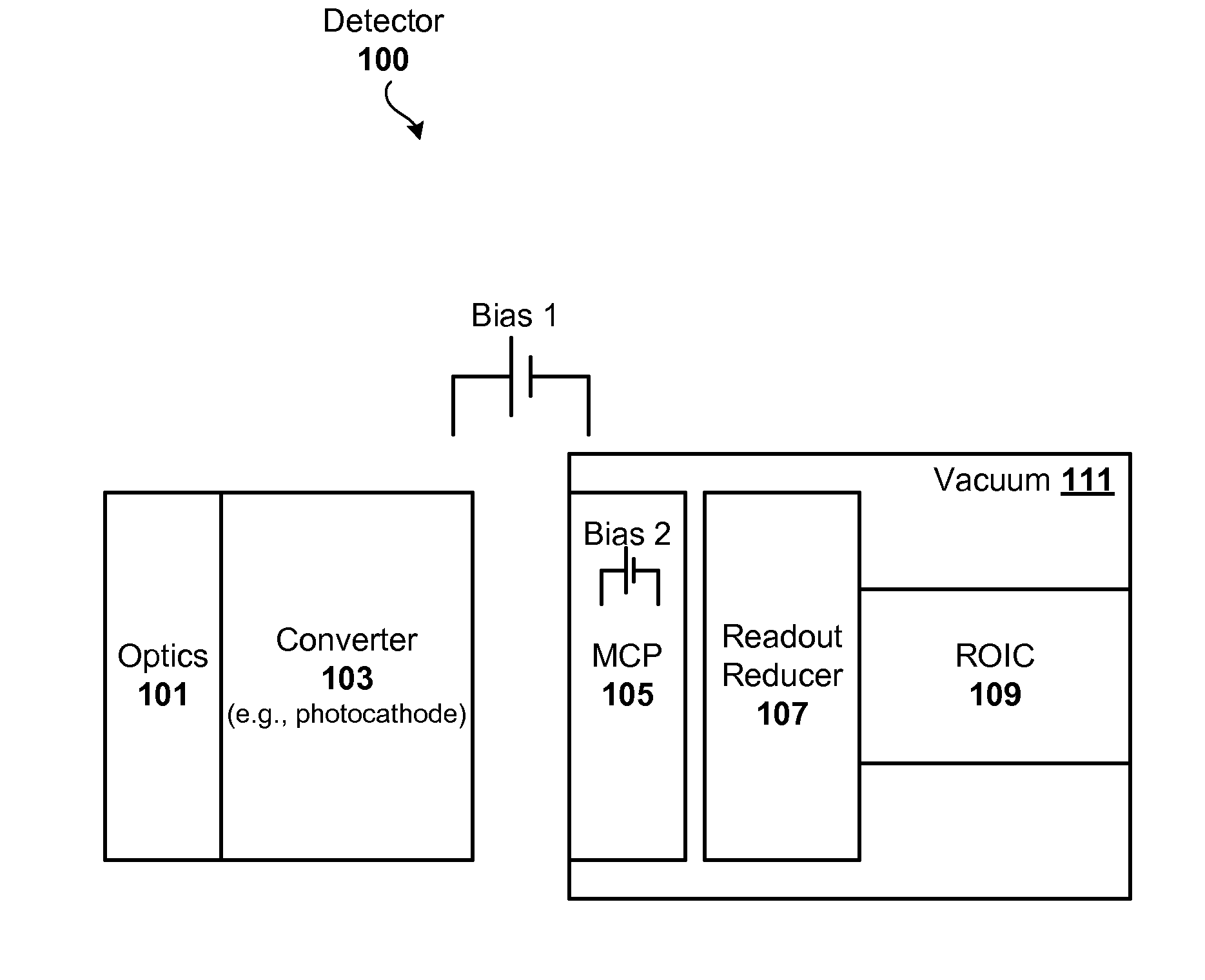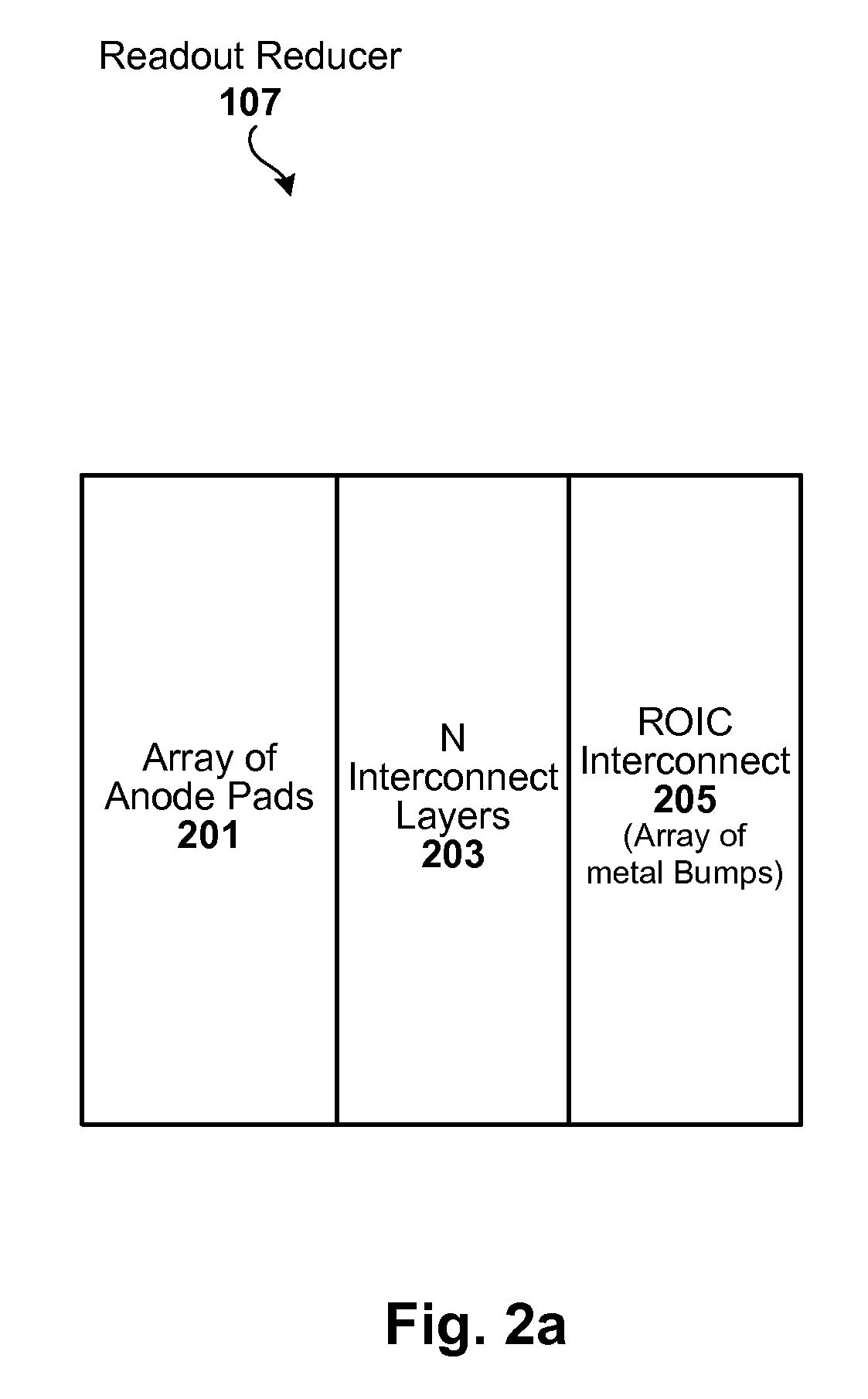Interface Techniques for Coupling a Microchannel Plate to a Readout Circuit
a readout circuit and microchannel plate technology, applied in the field of sensors, can solve the problems of reducing detection efficiency, reliability, cost, weight and power, and difficulty in fabricating a roic that is compatible with such large sized active areas, and achieves good thermal match and denser pixel resolution
- Summary
- Abstract
- Description
- Claims
- Application Information
AI Technical Summary
Benefits of technology
Problems solved by technology
Method used
Image
Examples
Embodiment Construction
[0021]Techniques are disclosed that can be used to interface a microchannel plate (MCP) with readout circuitry. The techniques can be employed, for instance, with MCP based devices used in a numerous sensing / detection applications, and are particularly suitable for applications where it is desirable to interface an MCP having a relatively large active area to a readout circuit having a relatively smaller active area. The interface can be carried out on a pixel-to-pixel basis and effectively reduces a relatively large MCP image to a smaller ROIC image. The interface may also be configured with flexible anode pad geometry, which allows for compensation of optical blur variations and very high fill factor. The interface can be made using standard semiconductor materials and photolithography techniques, and can be configured with thermal expansion qualities that closely track or otherwise match that of the readout circuitry.
[0022]General Overview
[0023]As previously explained, MCP sensor...
PUM
 Login to View More
Login to View More Abstract
Description
Claims
Application Information
 Login to View More
Login to View More - R&D
- Intellectual Property
- Life Sciences
- Materials
- Tech Scout
- Unparalleled Data Quality
- Higher Quality Content
- 60% Fewer Hallucinations
Browse by: Latest US Patents, China's latest patents, Technical Efficacy Thesaurus, Application Domain, Technology Topic, Popular Technical Reports.
© 2025 PatSnap. All rights reserved.Legal|Privacy policy|Modern Slavery Act Transparency Statement|Sitemap|About US| Contact US: help@patsnap.com



